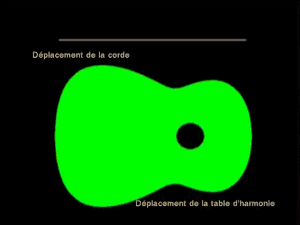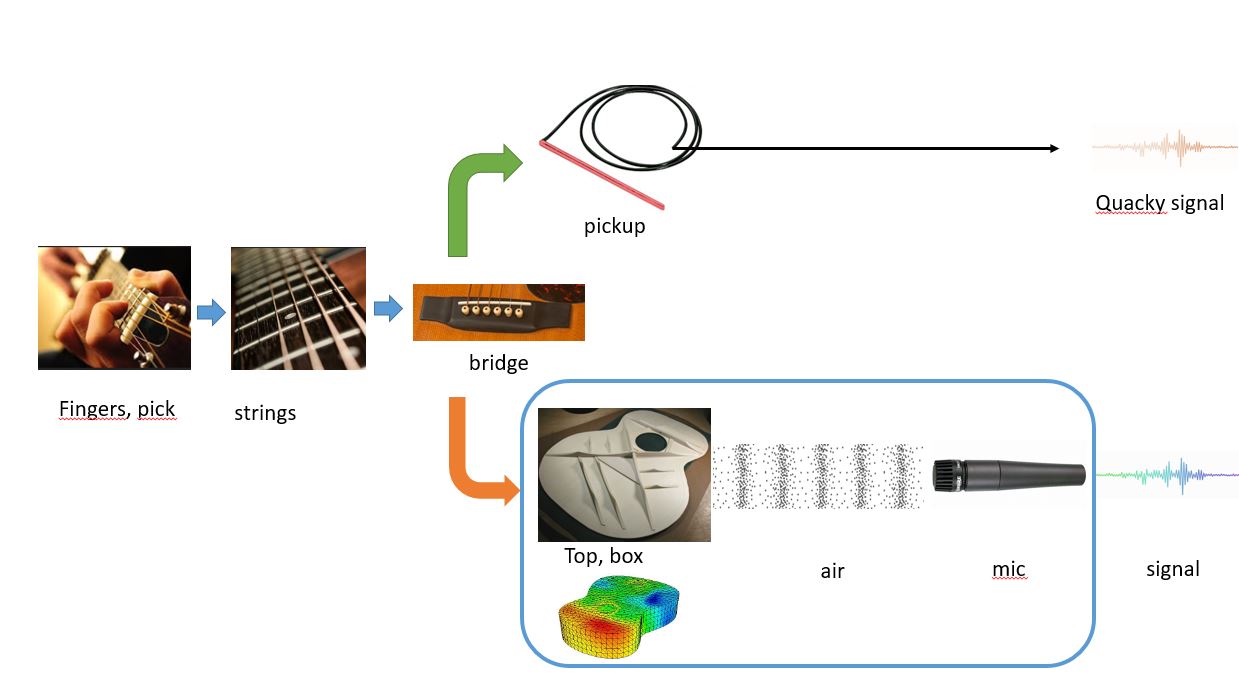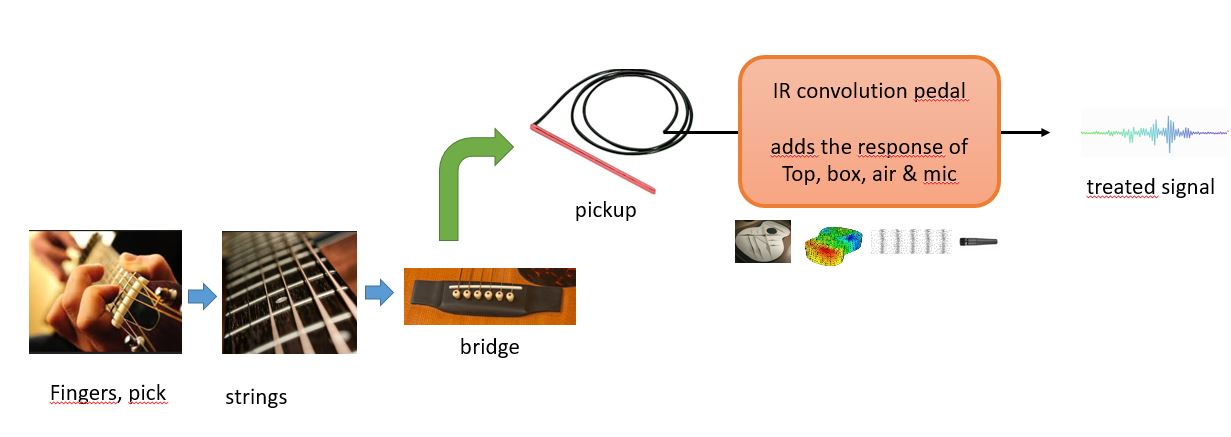What is an Impulse Response? What does it do?
An impulse response is the response of an object when hit. For example, a glass will ring at its resonance frequency when hit. This because when you briefly hit an object you excite all the frequencies. If one frequency is resonant, it will "pop out".A guitar has more than one resonant frequency as illustrated by this youtube video featuring the Chladni patterns of a guitar top. In this video, instead of hitting/tapping the top as some luthier do, a loudspeaker is used to scan all the frequencies. Some powder is put on the guitar top to reveal each resonance pattern.
Youtube video link
To further illustrate that, here is a simulation of a guitar top movement when the strings vibrate.

The movement of the top is due its multiple resonances.
Because an undersaddle pickup only sens the vibrations at the saddle, it is impossible to represent such a complexity. On the picture, below the signal chain of an acoustic-electric guitar is represented when amplified by a piezo UST pickup or a microphone. The fingers pluck the strings that vibrates. That vibration is coupled to the top and to the body of the guitar. The top of the guitar then acts as a loudspeaker membrane and pushes the air into motion. That's where the acoustic tone comes from.
 A piezo UST pickup mostly sens the string motion and probably a bit of the guitar bridge motion. Whereas
a
microphone will sens the air motion giving a much more realistic "picture" of the acoustic tone.
A piezo UST pickup mostly sens the string motion and probably a bit of the guitar bridge motion. Whereas
a
microphone will sens the air motion giving a much more realistic "picture" of the acoustic tone.
The idea of Impulse response convolution is to recreate that acoustic tone by capturing the response of the guitar top through a microphone. That "impulse response" (IR) can then be loaded into an IR loader pedal that will be added between the pickup and the amplifier/PA system.

Link to read what Larry Fishman has to say about IR.
Is IR just a complex EQ?
NO it is not. IR is not just a complex EQ.I answered in length here Link to my answer on the acoustic guitar forum
Here is the essential response:
- First, in term of signal processing the operations are not the same. EQ uses IIR filters while IR convolution uses FIR filter.
- Second, IR convolution, and to be more precise FIR filters enables to engineer the phase response to your liking. EQ can not.
EQ are IIR filter
PROs: They are simple, efficient and have a "memory" of both the inputs and the outputs of the filter. They can do simple frequency shaping (Shelf, high-pass,low pass, bell, notches, parametric, graphic...). They are accurate all along the spectrum and enable to perform high-Q (thin peak or notches) correction.
CONs: They don't let you tune the phase response (unless you choose not to alter the amplitude).
IR are FIR filter
PROs: They are complex. They have NO memory of the past outputs of the filter. They allow you to shape both amplitude and phase. So you can actually create microdelays between frequencies on purpose. This enables you to recreate the top response of your guitar in time.
CONs: They require more computing power. They are inaccurate on the low end unless your DSP is strong enough to use bigger IR wav files. They can not perform high-Q (thin peak or notches) correction in the low end as easily as IIR. (So you will never make an anti-feedback filter out of FIR). They will induce a distant feel (which can be a bless: more natural response or a curse: roomy distant sound).
What you see on the net and Youtube Many people claim making IRs by using EQ match such as Fabfilter Pro Q and then capture the response into an IR file.
Is it possible?
YES, however with the limitation mentioned above. You won't model the phase response of your guitar, the low end resolution will be limited, and your IR file when used will not feature the "memory" effect an IIR has.
[Here is how->Link to Generalities]
Will it be like Tonedexter?
NO. Tonedexter, Optima AIR, Fishman Aura... All those pedals model BOTH amplitude and phase.
If you find this website useful please donate